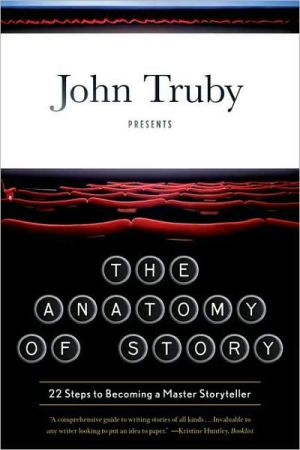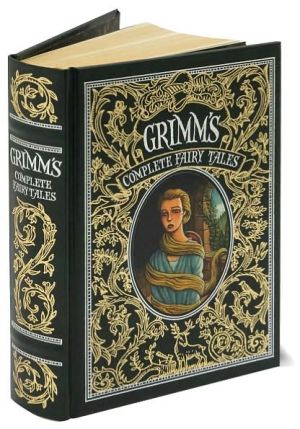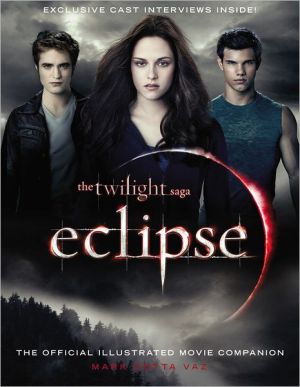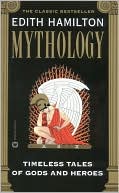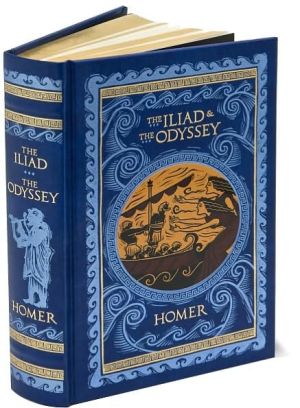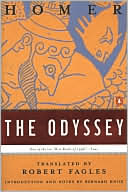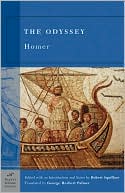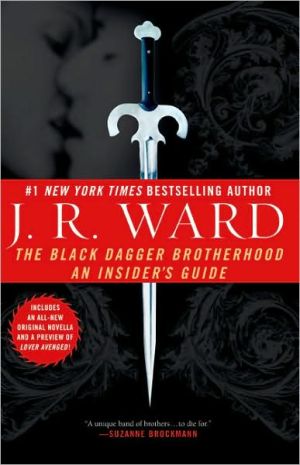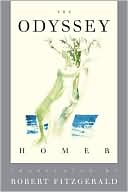The Anatomy of Story: 22 Steps to Becoming a Master Storyteller
John Truby is one of the most respected and sought-after story consultants in the film industry, and his students have gone on to pen some of Hollywood's most successful films, including Sleepless in Seattle, Scream, and Shrek. The Anatomy of Story is his long-awaited first book, and it shares all of his secrets for writing a compelling script. Based on the lessons in his award-winning class, Great Screenwriting, The Anatomy of Story draws on a broad range of philosophy and mythology,...
Search in google:
"If you're ready to graduate from the boy-meets-girl league of screenwriting, meet John Truby . . . [his lessons inspire] epiphanies that make you see the contours of your psyche as sharply as your script."—LA Weekly John Truby is one of the most respected and sought-after story consultants in the film industry, and his students have gone on to pen some of Hollywood’s most successful films, including Sleepless in Seattle, Scream, and Shrek. The Anatomy of Story is his long-awaited first book, and it shares all his secrets for writing a compelling script. Based on the lessons in his award-winning class, Great Screenwriting, The Anatomy of Story draws on a broad range of philosophy and mythology, offering fresh techniques and insightful anecdotes alongside Truby’s own unique approach to building an effective, multifaceted narrative.
The Anatomy of Story\ 22 Steps to Becoming a Master Storyteller \ \ By Truby, John \ Faber & Faber\ Copyright © 2007 Truby, John\ All right reserved.\ ISBN: 9780865479517 \ \ \ Excerpt\ Everyone can tell a story. We do it every day. “You won’t believe what happened at work.” Or “Guess what I just did!” Or “A guy goes into a bar . . .” We see, hear, read, and tell thousands of stories in our lives.\ The problem comes in telling a great story. If you want to become a master storyteller, and maybe even get paid to be one, you run up against tremendous obstacles. For one thing, showing the how and why of human life is a monumental job. You have to have a deep and precise understanding of the biggest, most complex subject there is. And then you have to be able to translate your understanding into a story. For most writers, that may be the biggest challenge of all.\ I want to be specific about the obstacles of story technique because that’s the only way a writer can hope to overcome them. The first obstacle is the common terminology most writers use to think about story. Terms like “rising action,” “climax,” “progressive complication,” and “denouement,” terms that go as far back as Aristotle, are so broad and theoretical as to be almost meaningless. Let’s be honest: they have no practical value forstorytellers. Say you are writing a scene where your hero is hanging by his fingertips, seconds from falling to his death. Is that a progressive complication, a rising action, a denouement, or the opening scene of the story? It may be none of them or all of them, but in any event, these terms don’t tell you how to write the scene or whether to write it at all.\ The classic story terms suggest an even bigger obstacle to good technique: the very idea of what story is and how it works. As a storyteller in training, the first thing you probably did was read Aristotle’s Poetics. I believe Aristotle was the greatest philosopher in history. But his thinking about story, while powerful, is surprisingly narrow, focused on a limited number of plots and genres. It is also extremely theoretical and difficult to put into actual practice, which is why most storytellers trying to learn the practical techniques of their craft from Aristotle leave empty-handed.\ If you are a screenwriter, you probably moved from Aristotle to a much simpler understanding of story called “three-act structure.” This is also problematic, because three-act structure, albeit a lot easier to understand than Aristotle, is hopelessly simplistic and in many ways just plain wrong.\ Three-act theory says that every story for the screen has three “acts”: the first act is the beginning, the second is the middle, and the third is the end. The first act is about thirty pages long. The third act is also about thirty pages long. And the second act runs to around sixty pages. And this three-act story supposedly has two or three “plot points” (whatever those are). Got that? Great. Now go and write a professional script.\ I’m simplifying this theory of story, but not by much. It should be obvious that such an elementary approach has even less practical value than Aristotle. But what’s worse is that it promotes a view of story that is mechanical. The idea of an act break comes from the conventions of traditional theater, where we close the curtain to signal the end of an act. We don’t need to do that in movies, novels, and short stories or even, for that matter, in many contemporary plays.\ In short, act breaks are external to the story. Three-act structure is a mechanical device superimposed on the story and has nothing to do with its internal logic—where the story should or should not go.\ A mechanical view of story, like three-act theory, inevitably leads to episodic storytelling. An episodic story is a collection of pieces, like parts stored in a box. Events in the story stand out as discrete elements and don’t connect or build steadily from beginning to end. The result is a story that moves the audience sporadically, if at all.\ Another obstacle to mastering storytelling has to do with the writing process. Just as many writers have a mechanical view of what a story is, they use a mechanical process for creating one. This is especially true of screenwriters whose mistaken notions of what makes a script salable lead them to write a script that is neither popular nor good. Screenwriters typically come up with a story idea that is a slight variation on a movie they saw six months previously. Then they apply a genre, like “detective,” “love,” or “action,” and fill in the characters and plot beats (story events) that go with that form. The result: a hopelessly generic, formulaic story devoid of originality.\ In this book, I want to show you a better way. My goal is to explain how a great story works, along with the techniques needed to create one, so that you will have the best chance of writing a great story of your own. Some would argue that it’s impossible to teach someone how to tell a great story. I believe it can be done, but it requires that we think and talk about story differently than in the past.\ In simplest terms, I’m going to lay out a practical poetics for storytellers that works whether you’re writing a screenplay, a novel, a play, a teleplay, or a short story. I will\ *Show that a great story is organic—not a machine but a living body that develops\ *Treat storytelling as an exacting craft with precise techniques that will help you be successful, regardless of the medium or genre you choose\ *Work through a writing process that is also organic, meaning that we will develop characters and plot that grow naturally out of your original story idea\ The main challenge facing any storyteller is overcoming the contradiction between the first and second of these tasks. You construct a story from hundreds, even thousands, of elements using a vast array of techniques. Yet the story must feel organic to the audience; it must seem like a single thing that grows and builds to a climax. If you want to become a great storyteller, you have to master this technique to such a high degree that your characters seem to be acting on their own, as they must, even though you are the one making them act that way.\ In this sense we storytellers are a lot like athletes. A great athlete makes everything look easy, as though his body just naturally moves that way. But in fact he has so mastered the techniques of his sport that his technique has simply disappeared from view, and the audience sees only beauty. Excerpted from The Anatomy of Story by John Truby. Copyright © 2007 by John Truby. Published in October 2007 by Faber and Faber, Inc., an affiliate of Farrar, Straus and Giroux. All rights reserved. \ \ Continues... \ \ \ \ Excerpted from The Anatomy of Story by Truby, John Copyright © 2007 by Truby, John. Excerpted by permission.\ All rights reserved. No part of this excerpt may be reproduced or reprinted without permission in writing from the publisher.\ Excerpts are provided by Dial-A-Book Inc. solely for the personal use of visitors to this web site. \ \
Acknowledgments ixStory Space, Story Time 3Premise 16The Seven Key Steps of Story Structure 39Character 55Moral Argument 108Story World 145Symbol Web 220Plot 258Scene Weave 326Scene Construction and Symphonic Dialogue 373The Never-Ending Story 418Notes 423Index 425
